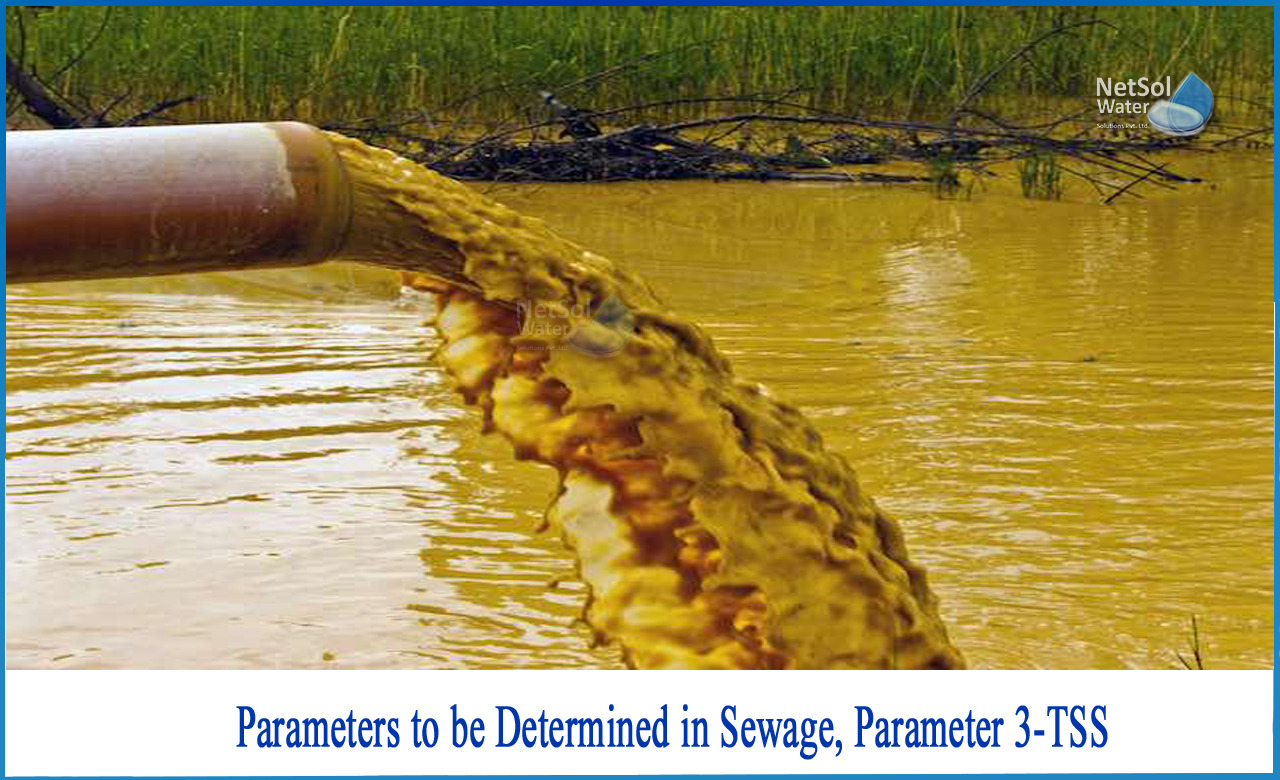Overview
The degree of water pollution is determined using sewage parameters. Water pollution is defined as any change in the physical, chemical, or biological qualities of water, resulting in wastewater. These waters must be cleansed after usage to prevent pollution of lakes, aquifers, rivers, and seas, which are mainly the result of human activity. These pollutants are all chemicals or unwanted items that pollute the air, soil, and water.
Thousands of workers undertake sewage parameter studies every day at all sewage treatment plants. These are pollution indicators that are used to ensure that wastewater complies with local regulations.
What are parameters of Total suspended Solids in sewage?
Total suspended solids, or TSS, are waterborne particles larger than 2 microns in diameter. A fully dissolved solid, on the other hand, is defined as any particle less than 2 microns (TDS). Although inorganic materials make up the majority of total suspended solids, algae and bacteria, which can also be included.
TSS can be sand, silt, or plankton, as well as anything else that floats or "suspends" in water. The organic particles released into the water when some water sources are contaminated with rotting plants or animals are usually suspended solids. While some sediment settles at the base of a water source, TSS floats on the surface or remains suspended somewhere in the middle. TSS has an effect on water clarity, hence, higher the TSS content of a water source, the less clear it will be.
What are the effects of TSS in water?
High levels of total suspended particles in drinking water or wastewater can have negative consequences for the environment as well as human health. When it comes to water quality, high TSS might reduce the natural dissolved oxygen levels in the water and raise the temperature. This could make it impossible for species in the water, such as little fish, to live.
TSS can also block sunlight, which can impede photosynthesis, reducing plant viability and lowering oxygen levels in the water. Total suspended particles in drinking water may have an impact on human health as well, depending on the situation. Bacteria and algae, for example, can cause gastrointestinal problems, whereas metals and other pollutants can cause major health problems or even death.
Some typical TSS, such as sand and silt, aren't detrimental to your health, but they might cause aesthetic problems in your home's pipes, plumbing, fittings, and water-based appliances.
What increases TSS in water?
1: Erosion & Runoff: TSS levels in water might rise due to increased erosion of river and stream banks. The dispersed particles released by dirt and soil might settle out across the water, making it appear murky. Runoff, which occurs when water travels through deteriorating soil, can have comparable effects.
2: Human Pollution: TSS levels in water sources are caused by human activity. Pathogens and heavy metals that are dissolved in water can adhere to suspended water particles, lowering water quality. Pesticides, lead, bacteria, and mercury are examples of common human pollution contaminants.
3: Algae: Algae can be found in both freshwater and saltwater. Organic material is discharged into the water as these creatures die, reducing oxygen levels in the water and contributing to TSS levels.
4: Sediment Disruption: Sand and gravel, which are heavier sediments, generally settle on the bottom of riverbeds and streams. However, if sediment in a flowing body of water has been disrupted by human or natural activities, the silt may get suspended in the river, increasing TSS levels downstream.
How can TSS be reduced in water?
Suspended Solids are generally reduced through both physical and biological methods, such as settling. In a typical home effluent, the SS concentration is 300 mg/l, which must be reduced to 35 mg/l or better.
Extra treatment, such as with a Filter Press or Package Media Filter, may be required to achieve very low Suspended Solids concentrations. Because SS is linked to a particular quantity of BOD, lowering SS will result in a reduction in BOD. When the SS concentration is low, the effluent seems clear, but as the SS concentration rises, the effluent becomes increasingly hazy.
Netsol Water is a family-owned and operated manufacturer of package (all-in-one) products for sewage and surface water treatment in India.
Netsol Water is Greater Noida-based leading water & wastewater treatment plant manufacturer. We are industry's most demanding company based on client review and work quality. We are known as best commercial RO plant manufacturers, industrial RO plant manufacturer, sewage treatment plant manufacturer, Water Softener Plant Manufacturers and effluent treatment plant manufacturers. Apart from this 24x7 customer support is our USP. Call on +91-9650608473, or write us at enquiry@netsolwater.com for any support, inquiry or product-purchase related query.



